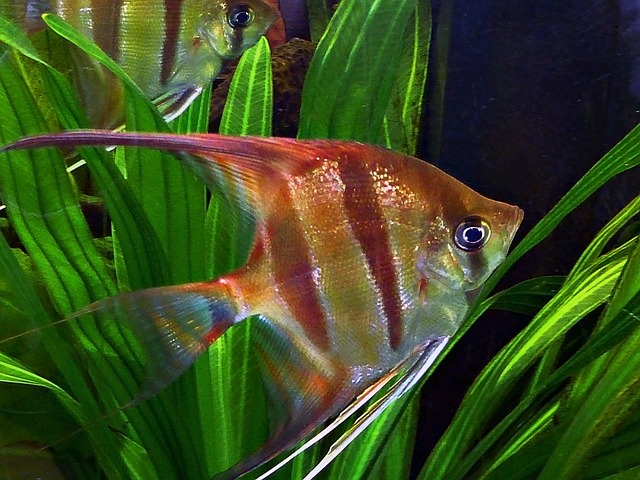Blue rams and Angelfish are two of the most popular fish species in the aquarium hobby. Both are known for their beautiful colors and peaceful temperament. However, many aquarists wonder if these two species can coexist in the same tank.
The answer to whether blue rams can live with Angelfish is not straightforward.
It depends on several factors, such as the size of the tank, the number of fish, and their personalities.
Blue rams are small and peaceful cichlids that prefer to live in groups, while Angelfish are more extensive and can be more aggressive, especially during breeding.
This article will explore the compatibility of blue rams and Angelfish in the aquarium. We will discuss the pros and cons of keeping these two species together and some tips on creating a harmonious community tank.
Whether you are a beginner or an experienced aquarist, this article will provide valuable insights on keeping your fish healthy and happy.
Compatibility of Blue Rams and Angelfish
Behavioral Compatibility
Blue Rams and Angelfish are peaceful species but have different temperaments. Blue Rams are known to be territorial and may become aggressive toward other fish during mating season or when protecting their fry.
On the other hand, Angelfish are generally peaceful, but they can become territorial during breeding.
If both species are introduced to the tank simultaneously and provided with plenty of hiding spots, they can coexist peacefully. However, if one is already established in the tank, raising the other may cause aggression.
Dietary Compatibility
Blue Rams and Angelfish have similar dietary requirements. They both prefer a varied diet of high-quality flakes, pellets, and frozen or live foods. Providing a balanced diet will help keep both species healthy and happy.
Water Parameters Compatibility
Blue Rams and Angelfish have similar water parameter requirements. They both prefer slightly acidic to neutral water with a pH range of 6.0-7.5.
The temperature range should be between 75-82°F (24-28°C). It’s essential to maintain stable water conditions to prevent stress and disease.
Blue Rams and Angelfish can live together peacefully with the right conditions. However, monitoring their behavior and providing plenty of hiding spots to prevent aggression is essential.
A balanced diet and stable water conditions will help keep both species healthy and happy.
Tank Setup for Blue Rams and Angelfish
When setting up a tank for Blue Rams and Angelfish, a few key factors exist to create a suitable environment for both species to thrive.
Tank Size
The recommended tank size for a Blue Rams and Angelfish community is at least 50 gallons. This will provide enough space for both species to establish their territories and swim freely without feeling cramped.
It is important to note that both species are territorial, so providing ample space and hiding spots will help reduce aggression.
Aquascape
The aquascape for a Blue Ram and Angelfish tank should include plenty of hiding spots and visual barriers.
This can be achieved with tall plants, rocks, and driftwood. It is essential to create multiple hiding spots to reduce aggression and provide a sense of security for both species.
Providing a sandy substrate will also mimic their natural habitat and promote natural behaviors such as digging and sifting.
Filtration
A high-quality filtration system is crucial for maintaining a healthy environment for Blue Rams and Angelfish. A canister or power filter with a high turnover rate is recommended to ensure proper water flow and oxygenation.
It is essential to regularly clean and maintain the filter to prevent the buildup of harmful toxins.
Water Changes
Regular water changes are necessary to maintain water quality and prevent the buildup of harmful toxins. A 20-30% weekly water change is recommended to keep the water parameters stable and healthy for both species.
It is also essential to test the water regularly to ensure that the pH, temperature, and other parameters are within the appropriate range for Blue Rams and Angelfish.
Overall, creating a suitable environment for both Blue Rams and Angelfish requires careful consideration of tank size, aquascape, filtration, and water changes.
Both species can coexist peacefully in a community tank by providing ample space, hiding spots, and maintaining good water quality.




